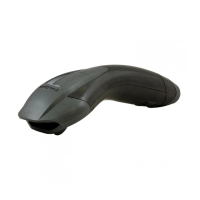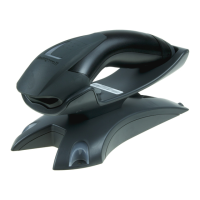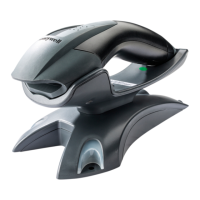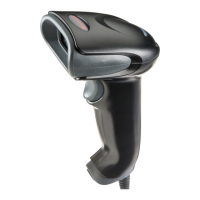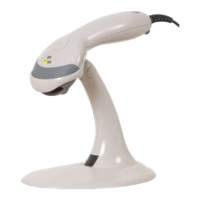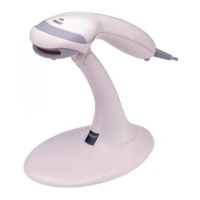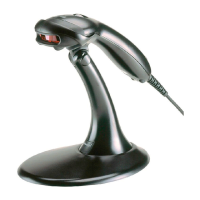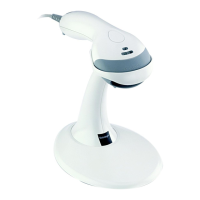Voyager 1602g User Guide 43
You will not hear a communication error tone in this mode, but you will hear a short
buzz when you press the scan button if the radio communication is not working.
Once the radio connection is made, the scanner produces a series of beeps while
the data is being transferred to the host.
About the Battery
Power is supplied to the wireless scanner by a rechargeable battery that is inte-
grated in the scanner. Batteries are shipped approximately 30% to 60% charged.
The battery should be charged for a minimum of 4 hours before initial use to
ensure optimal performance.
Charging Information
The battery is designed to charge while the scanner is plugged into a wall outlet or
into a host via the USB cable. Refer to Low Battery Indicator, page 45, for an inter-
pretation of the Charge Status indicators.
Plug the scanner in a Listed Limited Power Source (LPS) or Class 2 type power
supply with output rated 5 to 5.2Vdc, 1A.
Note: If you are powering the scanner through the USB interface cable instead of using an
external power supply, the current available for charging is reduced and charge times
are increased.
Battery Recommendations
• To learn more about Battery Maintenance for Portable Devices, go to
honeywell.com/PSS-BatteryMaintenance.
• The battery is a lithium ion cell and can be used without a full charge, and can
also be charged without fully discharging, without impacting the battery life.
There is no need to perform any charge/discharge conditioning on this type of
battery.
• Replace a defective battery immediately since it could damage the scanner.
• Although your battery can be recharged many times, it will eventually be
depleted. Replace it after the battery is unable to hold an adequate charge.
• If you are not sure if the battery or charger is working properly, send it to
Honeywell International Inc. or an authorized service center for inspection.
Refer to Customer Support for additional information.
Warning: There is a danger of explosion if the batteries are incorrectly
replaced. Replace the batteries with only the same or
equivalent type recommended by the manufacturer. Dispose of
used batteries according to the recycle program for batteries as
directed by the governing agency for the country where the
batteries are to be discarded.
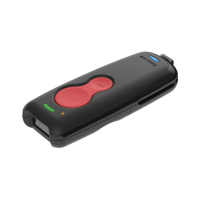
